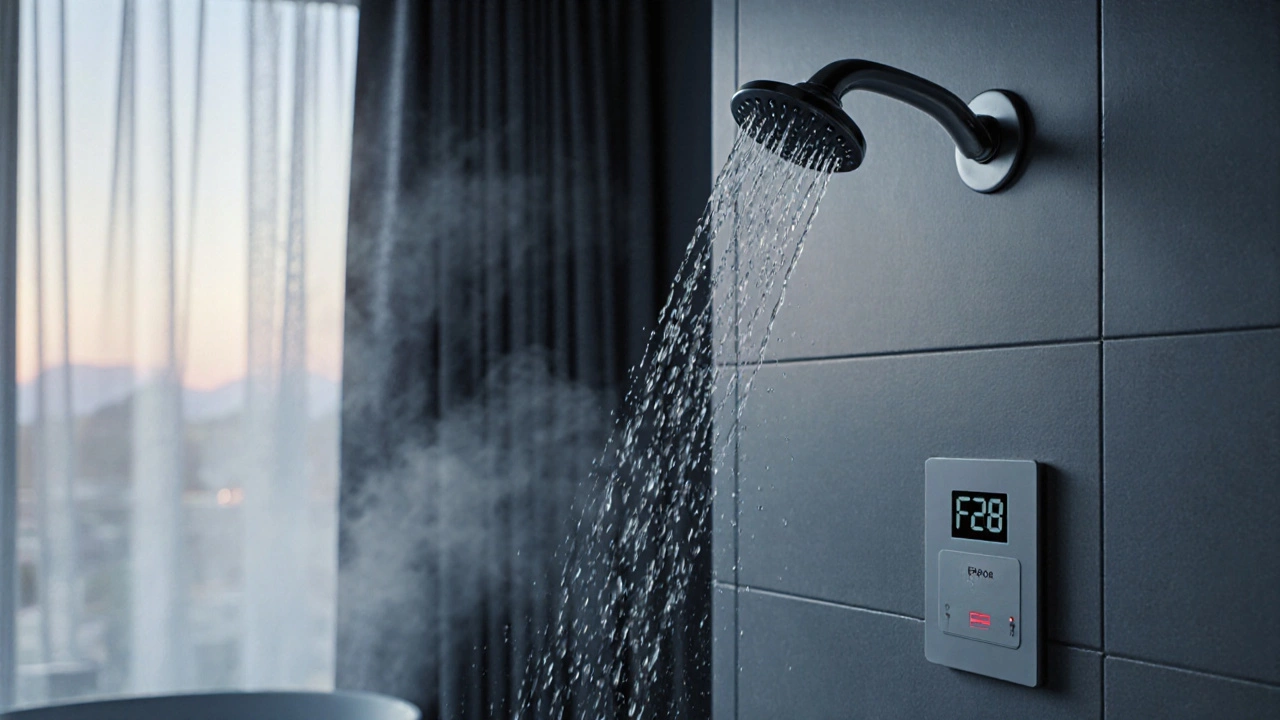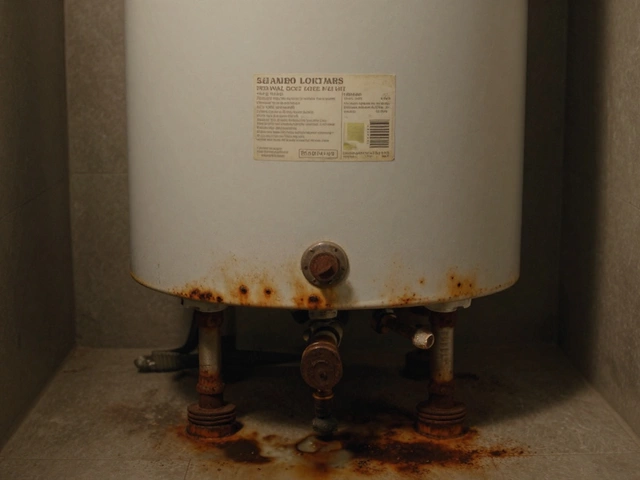Water Heater Health Check
Check the signs below that apply to your water heater. If you notice two or more signs, it's time to act.
If your hot water suddenly turns cold, or you notice rust-colored water coming out of your taps, your water heater might be on its last legs. Most water heaters in New Zealand homes last between 8 and 12 years. If yours is older than that and acting up, it’s not just an inconvenience-it could leak, flood your laundry, or leave you without hot water during winter. Knowing the signs early saves you from emergency calls, expensive water damage, and freezing showers.
1. Rust-Colored or Murky Hot Water
When you turn on the hot tap and the water looks like weak tea, that’s not just dirt. It’s rust inside the tank. Water heaters have a steel tank lined with glass to keep water from touching the metal. Over time, that lining breaks down, especially in hard water areas like Auckland. Once rust starts forming inside, it eats away at the tank walls. You won’t see it until it’s already leaking. If you’re seeing rust in your hot water but cold water runs clear, your water heater is corroding from the inside out. No amount of flushing will fix this. It’s time to replace it.
2. Water Pooling Around the Base
Spotting a puddle under your water heater? Don’t assume it’s just condensation. Condensation happens in winter when the tank is cold and the air is humid-but it doesn’t form puddles, just dampness. A real leak means something’s broken. The most common culprits are a failed pressure relief valve, a corroded tank, or a loose pipe connection. If the leak is coming from the bottom of the tank itself, the tank has rusted through. That’s not a repair. That’s a replacement. Waiting makes the leak worse. One small drip can turn into a flood in under 24 hours, especially if you’re away from home.
3. Strange Noises Coming From the Tank
Pop, crackle, bang-those aren’t normal sounds. They’re signs of sediment buildup. In areas with hard water, minerals like calcium and magnesium sink to the bottom of the tank and harden into a layer. When the heating element turns on, it heats the water trapped under that sediment. The water boils, creating steam pockets that pop and crack. That noise? That’s the tank literally cooking itself. Over time, the sediment insulates the element, making it work harder and burn out faster. You might also hear a low rumble-that’s the tank vibrating from the buildup. Flushing the tank helps if the sediment is fresh. But if the noise has been getting louder for months, the damage is done.

4. No Hot Water or Inconsistent Temperature
If your shower starts hot, then turns icy after five minutes, your water heater can’t keep up. That’s not a thermostat issue-it’s a sign the heating element is failing or the tank’s insulation is shot. Electric water heaters have two elements: one at the top, one at the bottom. If the bottom one dies, you’ll get lukewarm water from the top, but it won’t last. Gas heaters can have a broken pilot light or thermocouple, but if the burner is firing and you still get no heat, the heat exchanger might be coated in scale. If you’ve tried resetting the unit, checking the circuit breaker, and adjusting the thermostat, and nothing works, the tank is losing its ability to store and transfer heat. That’s not a fix. That’s a sign it’s done.
5. The Water Heater Is Over 10 Years Old
Age is the biggest predictor of failure. Most manufacturers rate water heaters for 8 to 12 years. In New Zealand, where water pressure is high and water is often hard, they rarely make it past 10. If your unit was installed before 2015 and you’re starting to see other signs, don’t wait for it to burst. Replacing a water heater before it fails is cheaper than cleaning up a flooded laundry room. A new unit also uses 20-30% less energy. Even if it still works, a 12-year-old heater is costing you more in electricity bills than a new one would. The cost of a new installation is less than the damage from one major leak.
6. Smelly or Sulfuric Hot Water
That rotten egg smell isn’t your pipes. It’s bacteria. Water heaters create the perfect warm, dark environment for sulfate-reducing bacteria to grow. These bugs feed on sulfur in the water and produce hydrogen sulfide gas. It’s harmless but disgusting. If you only smell it when you turn on the hot tap, the problem is in the tank. Flushing the tank and replacing the magnesium anode rod with an aluminum one can help. But if the smell returns after a few months, the tank is too corroded to clean properly. In older units, this smell is often the last sign before total failure.

7. Higher Energy Bills Without Increased Usage
Did your electricity bill jump 15-20% this winter, even though your family’s habits haven’t changed? A failing water heater works harder to keep water hot. Sediment buildup, worn insulation, or a dying element forces the system to run longer and more often. If your water heater is older than 8 years and your bills are climbing, it’s not coincidence. The unit is inefficient. You’re paying more to heat the same amount of water. A new, high-efficiency model pays for itself in 2-3 years through lower bills. That’s not a luxury-it’s a smart financial move.
What to Do Next
If you’ve noticed two or more of these signs, it’s time to act. Don’t wait for a leak to flood your floor. Get a professional to inspect it. They’ll check the anode rod, test the pressure relief valve, and assess the tank’s condition. If the tank is rusted or over 10 years old, they’ll likely recommend replacement. Don’t try to patch it. No sealant or temporary fix will last. Modern water heaters are quieter, more efficient, and come with 10-year warranties. You can choose between electric, gas, or heat pump models-each has pros and cons depending on your home setup. In Auckland, heat pump water heaters are becoming popular because they use 60% less energy than standard electric units.
How to Avoid This in the Future
Prevention is cheaper than repair. Flush your water heater once a year. It takes an hour and costs nothing but time. Turn off the power, attach a hose to the drain valve, and let the water run until it’s clear. This removes sediment before it hardens. Also, check the pressure relief valve every six months. Lift the lever-it should spurt water. If it doesn’t, replace it. And if your water heater is over 6 years old, consider replacing the anode rod. It costs $40 and extends the tank’s life by 3-5 years. Most people don’t do this. That’s why their heaters die early.




